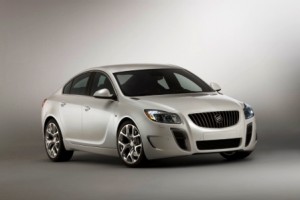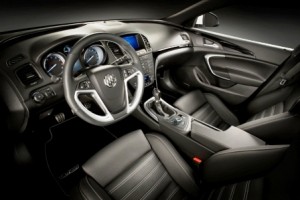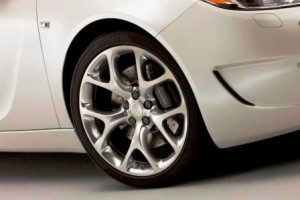The Buick Regal GS “show car” that debuts at the 2010 North American International Auto Show next week is already successfully on sale in Europe as the Opel Insignia, and will eventually appear on this side of the ocean after GM imports a less powerful 220 horsepower version from Germany.
Regal GS literally increases the boost of a 2.0-liter “Ecotec” turbocharged engine — the engine that will be offered on imported Regal CXL models later this summer. In GS guise, engine output is an estimated at 255 horsepower (190 kW) and 295 lb.-ft. of torque (400 Nm).
All-wheel drive is needed to handle the power, and the Haldex system in performance mode is calibrated to send maximum torque to the rear wheels, through a limited slip differential. Both manual and automatic transmissions will be offered, although the show car has a 6-speed manual. The mid-size GS should reach 60 mph in less than 6 seconds.
Outside a lowered body has two additional vertical front air intakes, as well as unique rocker panels, a tasteful rear spoiler, dual exhaust outlets, “Olympic White” paint and satin metallic accents. Completing the package are forged aluminum 20-inch wheels and P245/35ZR20 Bridgestone tires. The Brembo brake system has 14 x 1.2-inch (355 x 32 mm) cross-drilled rotors; four-piston, high-strength aluminum calipers.
Inside there is a sport steering wheel and metal pedals. The Recaro front seats have four-way lumbar support and cushion extensions.
“The idea behind the Regal GS was taking the production model in a more aggressive direction to appeal to performance enthusiasts,” said John Cafaro, Buick newly appointed design director.
“But along with its aggressive stance, there’s sophisticated style in the design that complements the driving experience.”
Regal GS is also has the CXL models Interactive Drive Control System. IDCS improves vehicle stability, while adapting the driving characteristics of the car to the driver’s preferences.
The driver selects among three operating modes – normal, sport and GS – that change the suspension settings, throttle response and steering sensitivity through the variable-effort steering system.



